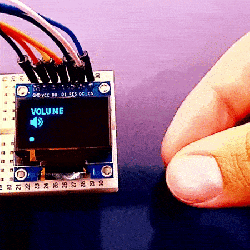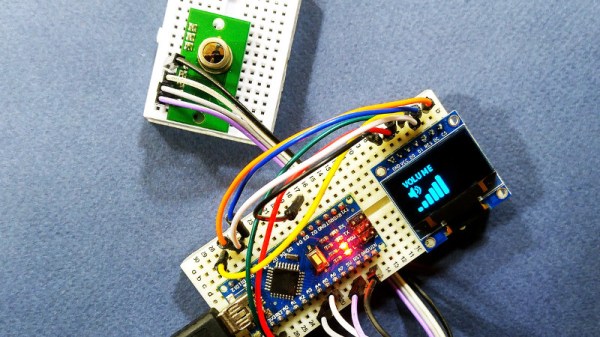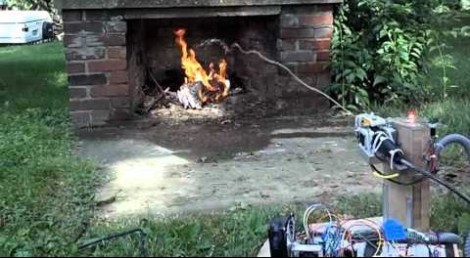Good science fiction has sound scientific fact behind it and when Tony Stark first made his debut on the big screen with design tools that worked at the wave of a hand, makers and hackers were not far behind with DIY solutions. Over the years the ideas have become much more polished, as we can see with this Gesture Recognition with PIR sensors project.
 The project uses the TPA81 8-pixel thermopile array which detects the change in heat levels from 8 adjacent points. An Arduino reads these temperature points over I2C and then a simple thresholding function is used to detect the movement of the fingers. These movements are then used to do a number of things including turn the volume up or down as shown in the image alongside.
The project uses the TPA81 8-pixel thermopile array which detects the change in heat levels from 8 adjacent points. An Arduino reads these temperature points over I2C and then a simple thresholding function is used to detect the movement of the fingers. These movements are then used to do a number of things including turn the volume up or down as shown in the image alongside.
The brilliant part is that the TPA81 8-Pixel sensor has been around for a number of years. It is a bit expensive though it has the ability to detect small thermal variations such as candle flames at up to 2 Meters. More recent parts such as the Panasonic AMG8834 that contain a grid of 8×8 such sensors are much more capable for your hacking/making pleasure, but come with an increased price tag.
This technique is not just limited to gestures, and can be used in Heat-Seeking Robots that can very well be trained to follow the cat around just to annoy it.













